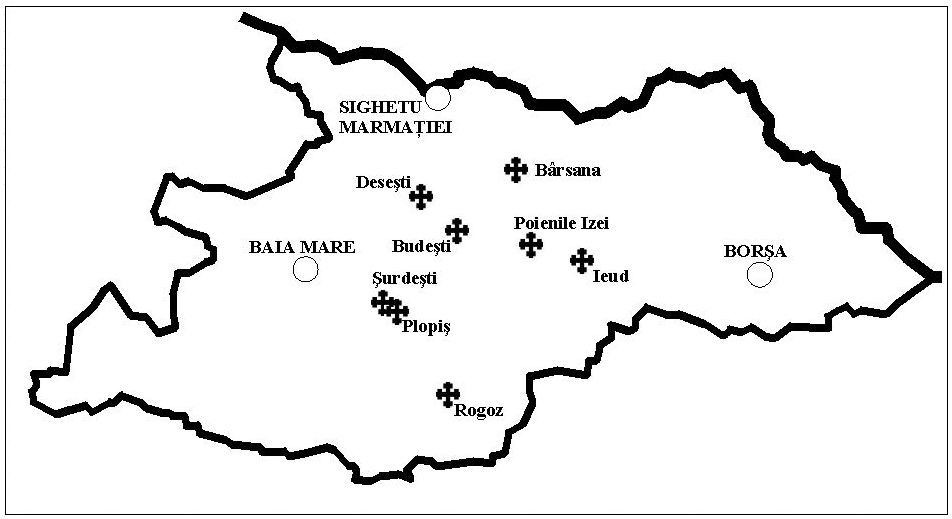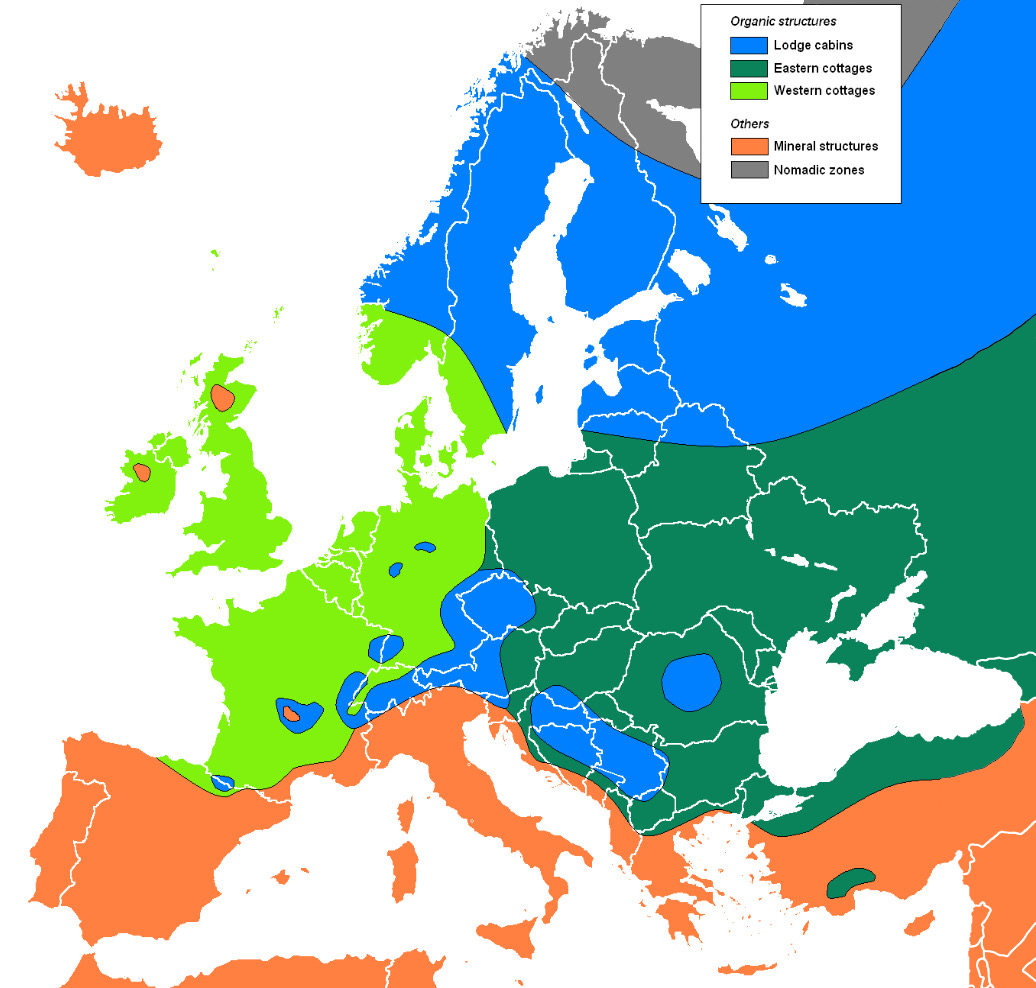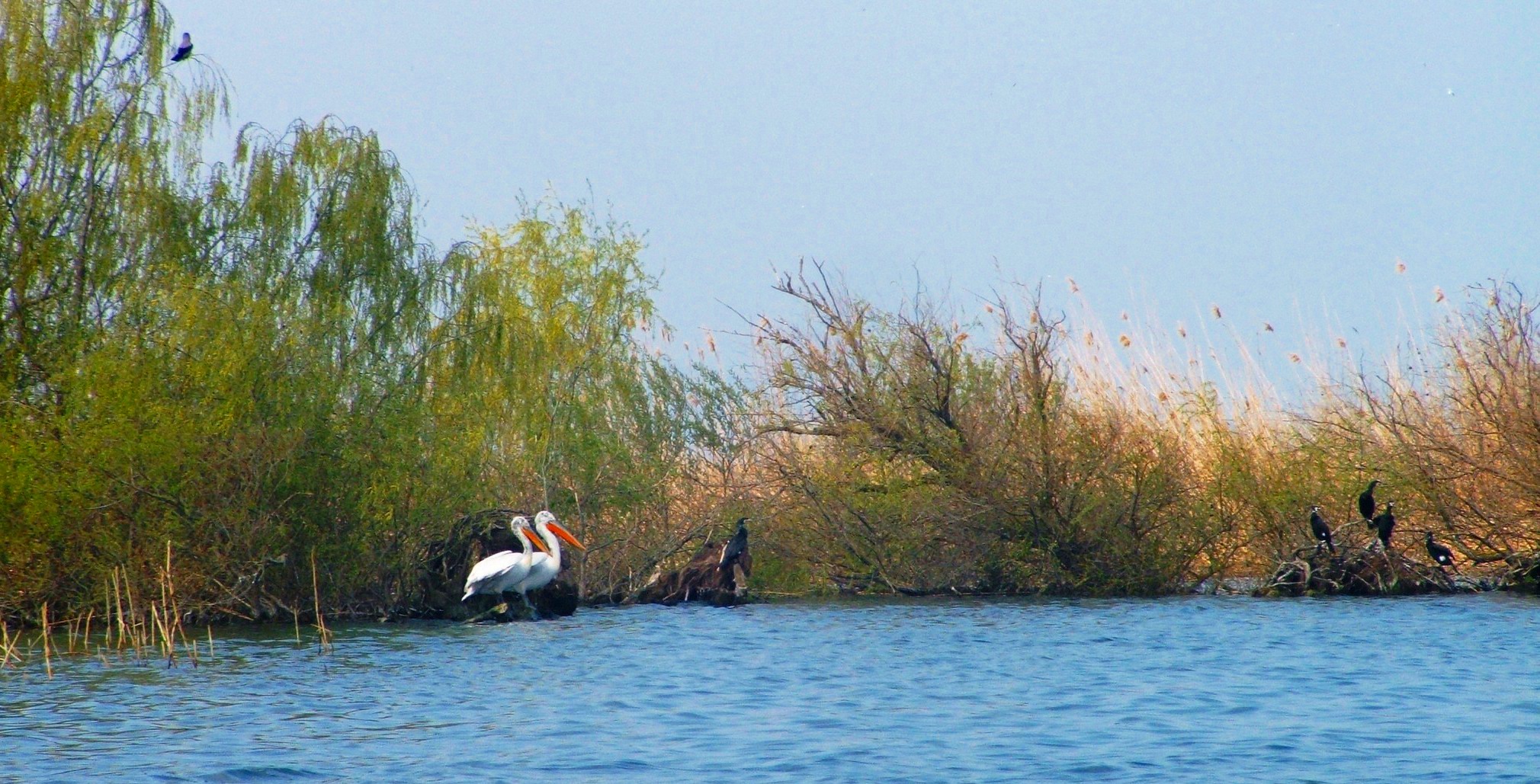|
Church Of The Holy Archangels, Rogoz
The Church of the Holy Archangels ( ro, Biserica de lemn Sf. Arhangheli) is one of eight Wooden Churches of Maramureș in Romania listed as a UNESCO World Heritage Site in December 1999. The structure is in the village of Rogoz in the Lăpuș River valley, within the mountainous area of northern Transylvania. History The church was built in 1633, which is indirectly confirmed by the inscription at the entrance informing visitors about the Tatar raid in 1661. The church survived the last Tatar invasion of 1717 which is referred to on a mural writing which mentions ''the terrifying year 1717 of the time of the Tatars''. In 1883 it was moved from Suciu de Sus to the centre of the village of Rogoz on the site of St. Paraskeva, an existing church built in 1701. In 1834 the size of the nave windows was increased. In 1960–1961 a major renovation of the structure was undertaken and the floors were renewed. [...More Info...] [...Related Items...] OR: [Wikipedia] [Google] [Baidu] |
Romanian Orthodox Church
The Romanian Orthodox Church (ROC; ro, Biserica Ortodoxă Română, ), or Patriarchate of Romania, is an autocephalous Eastern Orthodox church in full communion with other Eastern Orthodox Christian denomination, Christian churches, and one of the nine patriarchates in the Eastern Orthodox Church organization, Eastern Orthodox Church. Since 1925, the church's Primate (bishop), Primate bears the title of Patriarch. Its jurisdiction covers the territories of Romania and Moldova, with additional dioceses for Romanians living in nearby Serbia and Hungary, as well as for diaspora communities in Central Europe, Central and Western Europe, North America and Oceania. It is the only autocephalous church within Eastern Orthodox Church, Eastern Orthodoxy to have a Romance languages, Romance language for liturgical use. The majority of Romania's population (16,367,267, or 85.9% of those for whom data were available, according to the 2011 census data), as well as some 720,000 Moldovans, belo ... [...More Info...] [...Related Items...] OR: [Wikipedia] [Google] [Baidu] |
Desești
Desești ( hu, Desze) is a commune in Maramureș County, Maramureș, Romania. It is composed of three villages: Desești, Hărnicești (''Hernécs'') and Mara (''Crăcești'' until 1956; ''Krácsfalva''). The commune's Saint Parascheva Church was built in 1770 and is one of eight Wooden Churches of Maramureș that are listed by UNESCO as a World Heritage Site A World Heritage Site is a landmark or area with legal protection by an international convention administered by the United Nations Educational, Scientific and Cultural Organization (UNESCO). World Heritage Sites are designated by UNESCO for h ...br> References Communes in Maramureș County Localities in Romanian Maramureș {{Maramureş-geo-stub ... [...More Info...] [...Related Items...] OR: [Wikipedia] [Google] [Baidu] |
Historic Monuments In Maramureș County
History (derived ) is the systematic study and the documentation of the human activity. The time period of event before the invention of writing systems is considered prehistory. "History" is an umbrella term comprising past events as well as the memory, discovery, collection, organization, presentation, and interpretation of these events. Historians seek knowledge of the past using historical sources such as written documents, oral accounts, art and material artifacts, and ecological markers. History is not complete and still has debatable mysteries. History is also an academic discipline which uses narrative to describe, examine, question, and analyze past events, and investigate their patterns of cause and effect. Historians often debate which narrative best explains an event, as well as the significance of different causes and effects. Historians also debate the nature of history as an end in itself, as well as its usefulness to give perspective on the problems of the p ... [...More Info...] [...Related Items...] OR: [Wikipedia] [Google] [Baidu] |
17th-century Eastern Orthodox Church Buildings
The 17th century lasted from January 1, 1601 (Roman numerals, MDCI), to December 31, 1700 (Roman numerals, MDCC). It falls into the early modern period of Europe and in that continent (whose impact on the world was increasing) was characterized by the Baroque cultural movement, the latter part of the Spanish Golden Age, the Dutch Golden Age, the French ''Grand Siècle'' dominated by Louis XIV, the Scientific Revolution, the world's first public company and megacorporation known as the Dutch East India Company, and according to some historians, the General Crisis. From the mid-17th century, European politics were increasingly dominated by the Kingdom of France of Louis XIV, where royal power was solidified domestically in the civil war of the Fronde. The semi-feudal territorial French nobility was weakened and subjugated to the power of an absolute monarchy through the reinvention of the Palace of Versailles from a hunting lodge to a gilded prison, in which a greatly expanded royal ... [...More Info...] [...Related Items...] OR: [Wikipedia] [Google] [Baidu] |
Religious Buildings And Structures Completed In 1633
Religion is usually defined as a social-cultural system of designated behaviors and practices, morals, beliefs, worldviews, texts, sanctified places, prophecies, ethics, or organizations, that generally relates humanity to supernatural, transcendental, and spiritual elements; however, there is no scholarly consensus over what precisely constitutes a religion. Different religions may or may not contain various elements ranging from the divine, sacred things, faith,Tillich, P. (1957) ''Dynamics of faith''. Harper Perennial; (p. 1). a supernatural being or supernatural beings or "some sort of ultimacy and transcendence that will provide norms and power for the rest of life". Religious practices may include rituals, sermons, commemoration or veneration (of deities or saints), sacrifices, festivals, feasts, trances, initiations, funerary services, matrimonial services, meditation, prayer, music, art, dance, public service, or other aspects of human culture. Religions have sac ... [...More Info...] [...Related Items...] OR: [Wikipedia] [Google] [Baidu] |
Wooden Churches Of Maramureș
The wooden churches of Maramureș in the Maramureș region of northern Transylvania are a group of almost one hundred Orthodox churches, and occasionally Greek-Catholic ones, of different architectural solutions from different periods and areas. The Maramureș churches are high timber constructions with characteristic tall, slim bell towers at the western end of the building. They are a particular vernacular expression of the cultural landscape of this mountainous area of northern Romania. Maramureș is one of the better-known regions of Romania, with autonomous traditions since the Middle Ages. Its well-preserved wooden villages and churches, its traditional lifestyle, and the local colourful dresses still in use make Maramureș as near to a living museum as can be found in Europe. The wooden churches of the region that still stand were built starting from the 17th century all the way to 19th century. Some were erected on the place of older churches. They were a response to the ... [...More Info...] [...Related Items...] OR: [Wikipedia] [Google] [Baidu] |
Vernacular Architecture Of The Carpathians
The vernacular architecture of the Carpathians draws on environmental and cultural sources to create unique designs. Vernacular architecture refers to non-professional, folk architecture, including that of the peasants. In the Carpathian Mountains and the surrounding foothills, wood and clay are the primary traditional building materials. Effect of culture and religion Eastern Christianity Because most Ukrainian, Rusyn, and Romanian people are Eastern Christians, their building techniques have traditionally incorporated religious considerations into their buildings that are distinct from their Western Christian and Jewish neighbours. Firstly, all churches are divided into three parts (the narthex, the nave, and the sanctuary) and include an iconostasis (a wall of icons). The outer shape is often cruciform (cross shaped), but will always include a central dome and often several other domes. Parishioners face east during worship and there are no pews. The main door and windows ... [...More Info...] [...Related Items...] OR: [Wikipedia] [Google] [Baidu] |
List Of World Heritage Sites In Romania
The United Nations Educational, Scientific and Cultural Organization (UNESCO) World Heritage Sites are places of importance to cultural or natural heritage as described in the UNESCO World Heritage Convention, established in 1972. Cultural heritage consists of monuments (such as architectural works, monumental sculptures, or inscriptions), groups of buildings, and sites (including archaeological sites). Natural features (consisting of physical and biological formations), geological and physiographical formations (including habitats of threatened species of animals and plants), and natural sites which are important from the point of view of science, conservation or natural beauty, are defined as natural heritage. Romania accepted the convention on 16 May 1990, making its historical sites eligible for inclusion on the list. , there are nine World Heritage Sites in Romania, seven of which are cultural sites and two of which are natural. The first site in Romania, the Danube Delta ... [...More Info...] [...Related Items...] OR: [Wikipedia] [Google] [Baidu] |
Apse
In architecture, an apse (plural apses; from Latin 'arch, vault' from Ancient Greek 'arch'; sometimes written apsis, plural apsides) is a semicircular recess covered with a hemispherical vault or semi-dome, also known as an ''exedra''. In Byzantine, Romanesque, and Gothic Christian church (including cathedral and abbey) architecture, the term is applied to a semi-circular or polygonal termination of the main building at the liturgical east end (where the altar is), regardless of the shape of the roof, which may be flat, sloping, domed, or hemispherical. Smaller apses are found elsewhere, especially in shrines. Definition An apse is a semicircular recess, often covered with a hemispherical vault. Commonly, the apse of a church, cathedral or basilica is the semicircular or polygonal termination to the choir or sanctuary, or sometimes at the end of an aisle. Smaller apses are sometimes built in other parts of the church, especially for reliquaries or shrines of saints. Hi ... [...More Info...] [...Related Items...] OR: [Wikipedia] [Google] [Baidu] |
Cyrillic Script
The Cyrillic script ( ), Slavonic script or the Slavic script, is a writing system used for various languages across Eurasia. It is the designated national script in various Slavic languages, Slavic, Turkic languages, Turkic, Mongolic languages, Mongolic, Uralic languages, Uralic, Caucasian languages, Caucasian and Iranian languages, Iranic-speaking countries in Southeastern Europe, Eastern Europe, the Caucasus, Central Asia, North Asia, and East Asia. , around 250 million people in Eurasia use Cyrillic as the official script for their national languages, with Russia accounting for about half of them. With the accession of Bulgaria to the European Union on 1 January 2007, Cyrillic became the third official script of the European Union, following the Latin script, Latin and Greek alphabet, Greek alphabets. The Early Cyrillic alphabet was developed during the 9th century AD at the Preslav Literary School in the First Bulgarian Empire during the reign of tsar Simeon I of Bulgar ... [...More Info...] [...Related Items...] OR: [Wikipedia] [Google] [Baidu] |
Eastern Orthodoxy
Eastern Orthodoxy, also known as Eastern Orthodox Christianity, is one of the three main Branches of Christianity, branches of Chalcedonian Christianity, alongside Catholic Church, Catholicism and Protestantism. Like the Pentarchy of the first millennium, the mainstream (or "Canon law of the Eastern Orthodox Church, canonical") Eastern Orthodox Church is Organization of the Eastern Orthodox Church, organised into autocephalous churches independent from each other. In the 21st century, the Organization of the Eastern Orthodox Church#Autocephalous Eastern Orthodox churches, number of mainstream autocephalous churches is seventeen; there also exist Organization of the Eastern Orthodox Church#Unrecognised churches, autocephalous churches unrecognized by those mainstream ones. Autocephalous churches choose their own Primate (bishop), primate. Autocephalous churches can have Ecclesiastical jurisdiction, jurisdiction (authority) over other churches, some of which have the status of "Auto ... [...More Info...] [...Related Items...] OR: [Wikipedia] [Google] [Baidu] |
Maramureș County
Maramureș County () is a county (județ) in Romania, in the Maramureș region. The county seat is Baia Mare. Name In Hungarian language, Hungarian it is known as ''Máramaros megye'', in Ukrainian language, Ukrainian as Мараморо́щина, in German language, German as ''Kreis Marmarosch'' and in Yiddish as מארמאראש. Demographics In 2011, the county had a population of 461,290 and a population density of . * Romanians - 82.38% (or 380,018) * Hungarians in Romania, Hungarians - 7.53% (or 34,781) * Ukrainians of Romania, Ukrainians (including Hutsuls and other Rusyns) - 6.77% (or 31,234) * Romani people in Romania, Romani - 2.73% (or 12,638) * Germans of Romania, Germans (Zipser Germans and Transylvanian Saxons) - 0.27% (or 1,243) * Minorities of Romania, Others - 0.32% Geography Maramureș County is situated in the northern part of Romania, and has a border with Ukraine. This county has a total area of , of which 43% is covered by the Rodna Mountains ... [...More Info...] [...Related Items...] OR: [Wikipedia] [Google] [Baidu] |

.jpg)







